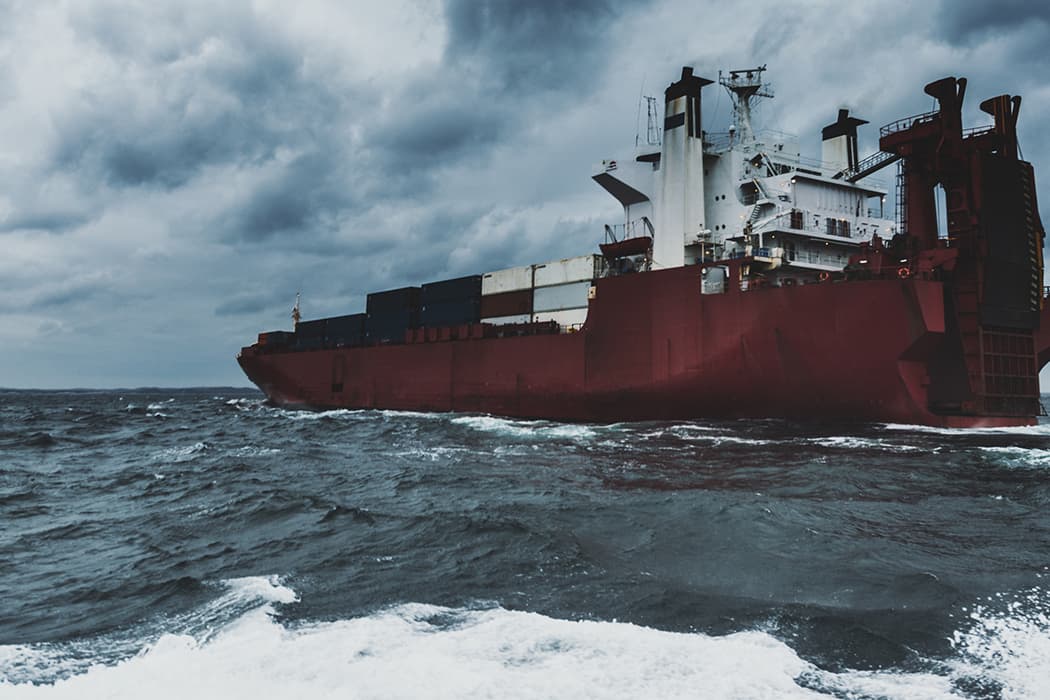
Maritime insurance executives estimate that 3,000 containers have been lost at sea over the past few months alone. Compared to the 1,382 containers on average lost per year between 2008-2019 as reported by The World Shipping Council, that’s a big jump. What’s the reason for it?
As you may have expected, there’s not a simple, all-encompassing answer, instead there are multiple variables at work. The good news is, there are steps you can take to help prepare for any delays or disruptions that result from a vessel accident. As a platform who works with the many different vessel operators to move our customers’ goods, we share some key things to know.
Why are vessel accidents increasing?
There are more containers on the water than ever
Over the years, vessels have increased in size and capacity. As such, they move more containers and can stack them higher. Add in the high demand for ocean service over the past few months and a decrease in blank sailings that would typically remove capacity, there are more vessels and containers out on the water.
Poor weather and high stacks of containers don’t mix
While vessels generally avoid storms, going through a relatively bad weather cell can happen. Ocean vessels are designed to roll in motion with the waves, however powerful waves caused by bad weather combined with high stacks of containers can change this rolling motion. In these situations, vessels undergo a synchronous and parametric rolling, which often causes vessels to tip at angles that displace higher stacked containers.
What are carriers doing about vessel accidents?
Ocean carriers are looking for ways to optimize how they block and brace containers to minimize accidents – including continued rigor around weight distributions, misdeclarations, improper packing and storage planning. There is also research being done into how technology can help sense container movement, allowing for faster reactions.
How to prepare for a vessel accident
Until your freight has been involved in a vessel accident, you may not be aware of the process or overall impact to your supply chain. Although vessel accidents are unplanned and usually unpredictable, there are steps you can take before you ship so you’re not scrambling when you get the news your freight was involved in an accident. Here’s what you need to know.
Have a backup plan to deal with delays
For starters, even if your freight is not lost at sea, you’re still likely to experience significant delays. For example, a recent maritime accident in December 2020 resulted in freight being held in Japan. In this case, each container (that was not damaged or lost at sea) needs to be unloaded and transshipped to another vessel for transportation. Access to the unimpacted containers can also take a while as the unloading and inspection of damaged containers might need to take place first.
Consider purchasing maritime insurance
One of the avenues to help protect your company financially is through maritime insurance. Cargo insurance is not a requirement, but as events like vessel accidents are usually outside of the carriers’ liability, insurance can provide added protection for your freight. With a cargo insurance policy, you are covered for unexpected losses .
Develop a resilient supply chain strategy
Unfortunately, insurance only applies to the value of lost freight. It cannot help you overcome delays, transload freight, or expedite new orders to realign inventory levels and ensure adequate stock is where it’s needed most. That’s where supply chain resiliency comes in. Rather than wait until you’re impacted by a vessel accident, now is the time to develop a plan that helps you minimize the impact to your business and allows you to continue serving customers.
Rely on a provider with a global suite of services
We recently had a customer impacted by a vessel accident. While their freight was not damaged, it was delayed. Unfortunately, equipment shortages and capacity constraints almost prevented the replacement stock from arriving on time. Through quick communications with our local team in South Asia and thanks to our extensive relationships with global carriers, we successfully secured the space and containers they needed.
But that was only the first hurdle. The original destination port had high congestion and vessel dwell times, so our team shifted to a different port and was able to keep an additional 20 days off the transit time. A transportation provider with reliable service and a global network is the best way to get the careful coordination and market insights these types of situations require.
You can prepare for the unexpected
Developments in technology and changes to freight blocking and bracing will never offer full protection from vessel accidents. Think about the vulnerabilities your supply chain could face in the wake of a vessel accident now to help you minimize the impact to your business in the future.
Ready to drive smarter solutions to prepare your supply chain for a vessel accident? Connect with our global network of experts.



